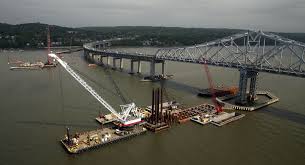 |
| People waiting for the train Photograph by Brian Snyder/Reuters theatlantic.com |
A big shout out once again to the National Trust for Historic Preservation for mentioning Tuesday's post, "#SaveParkerCenter" (May 26, 2015) in a tweet. Thanks NTHP, always love your support.
Today we move from how historic preservation can inform modern law enforcement to a subject that effect all of us in one form or another, public transportation. Even if you do not ride a bus, train, or subway public transportation is more than getting people from one place to another. Public transportation can increase access to employment and educational opportunities-or limit them. In a recent article for The Atlantic, titled "Stranded: How America's Failing Public Transportation Increases Inequality," Gillian B. White looks at cities with pockets of shoddy public transportation are actually increasing economic and social inequality. Ms. White identifies lack of access and investment as key factors in the stranding of America.
 |
| Transportation infrastructure ccjdigital.com |
 |
| Red Line Train archplanbaltimore.blogspot.com |
Prof. Kanter continues, Without really good transportation it's very difficult to deal with inequality. It is not just about access to jobs and schools, it is also about access to better quality food, services, products, and healthcare. Ms. White cites a recent study from Harvard which concluded that geographic mobility is connected to economic mobility. Further, a 2014 study from New York University "...found a link between poor public-transit access and higher rates of unemployment and decreased income in New York City."
 |
| Shipping lanes-U.S. transportation infrastructure cfr.org |
 |
| Mayor Adrian Fenty taking a test bike share ride Washington D.C. grist.org |
They report that bus drivers sometimes didn't complete routes late at night because there were very few passengers and that neighborhoods were considered dangerous. Or bus drivers would sometimes pass people by standing at stops.
Attractiveness of the bus stops was another major issue. Bus stops are in a frequent state of disrepair, provide inadequate-if any at all-shelter from the rain, cold, heat, or snow. Further, Prof. Kanter's book found that even in cities that had digital bus arrival/departure times, the information was often erroneous resulting in longer wait times. If that was not bad enough, try finding a space to stand, let alone sit. on a bus. Overcrowding and the lack of adequate space for even the smallest grocery bag means that riders cannot even get on once the bus arrives. Thus, America's failing public transit system is leaving rider literally stranded.
Prof. Rosabeth Moss Kanter tell us that There is no silver bullet...creating rapid bus service could help increase efficiency and could be completed fairly quickly than, say, laying rails. Yours truly highly doubts that the geniuses at CalTrans are thinking about this. Perhaps, as Alana Semuels wrote in a recent article for The Atlantic titled "New Bought Its Own Commuter Rail Station," (May 12, 2015; http://www.theatlantic.com), more public-private partnerships maybe the solution that allows financially desperate cities to increase their reach. According to Prof. Kanter, the problem has to be addressed, and quickly, especially in the face of growing economic disparity. We need to think about how important forms of transportation are to the economy and quality of life. And we have to reinvest.
No comments:
Post a Comment